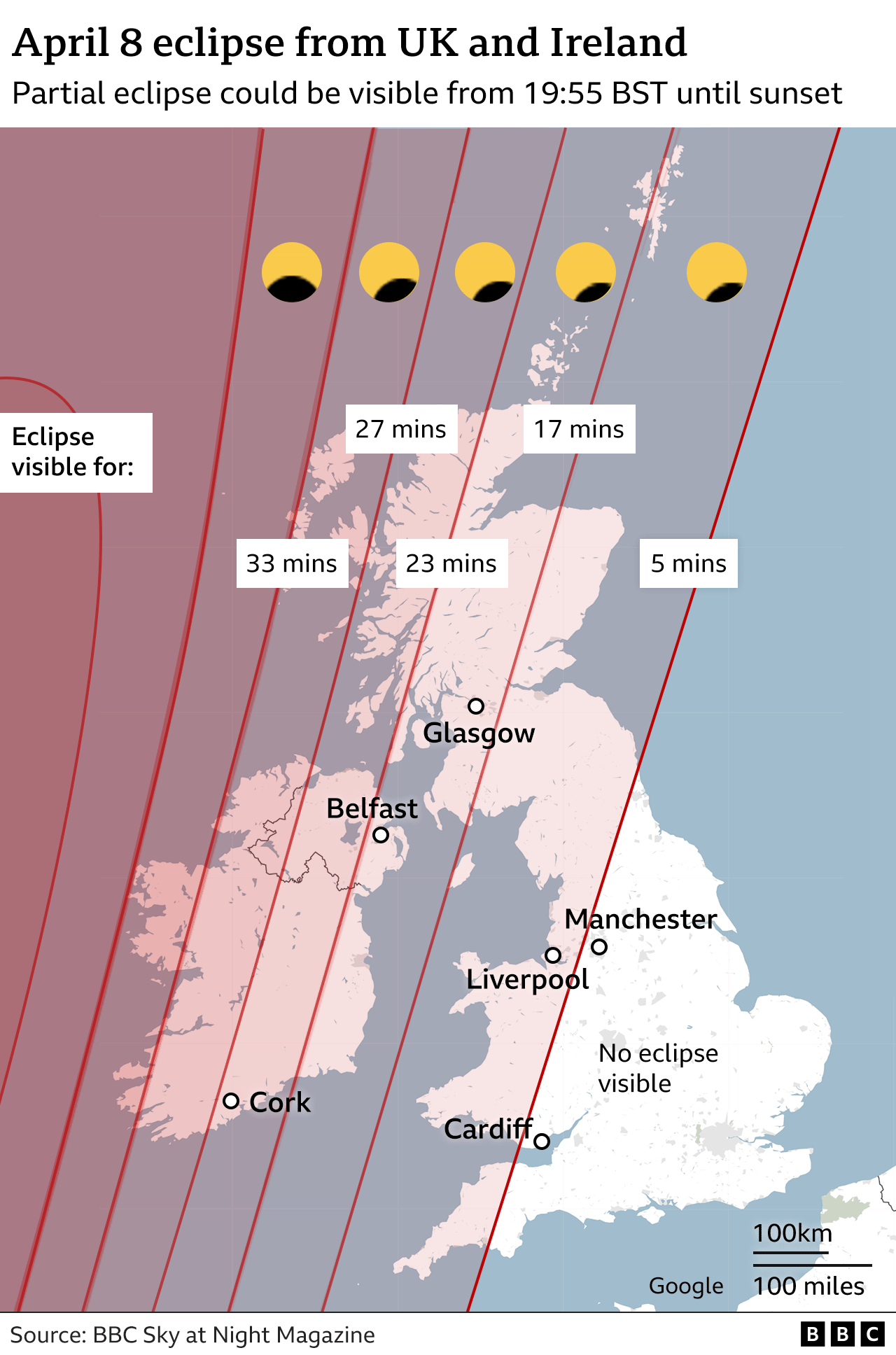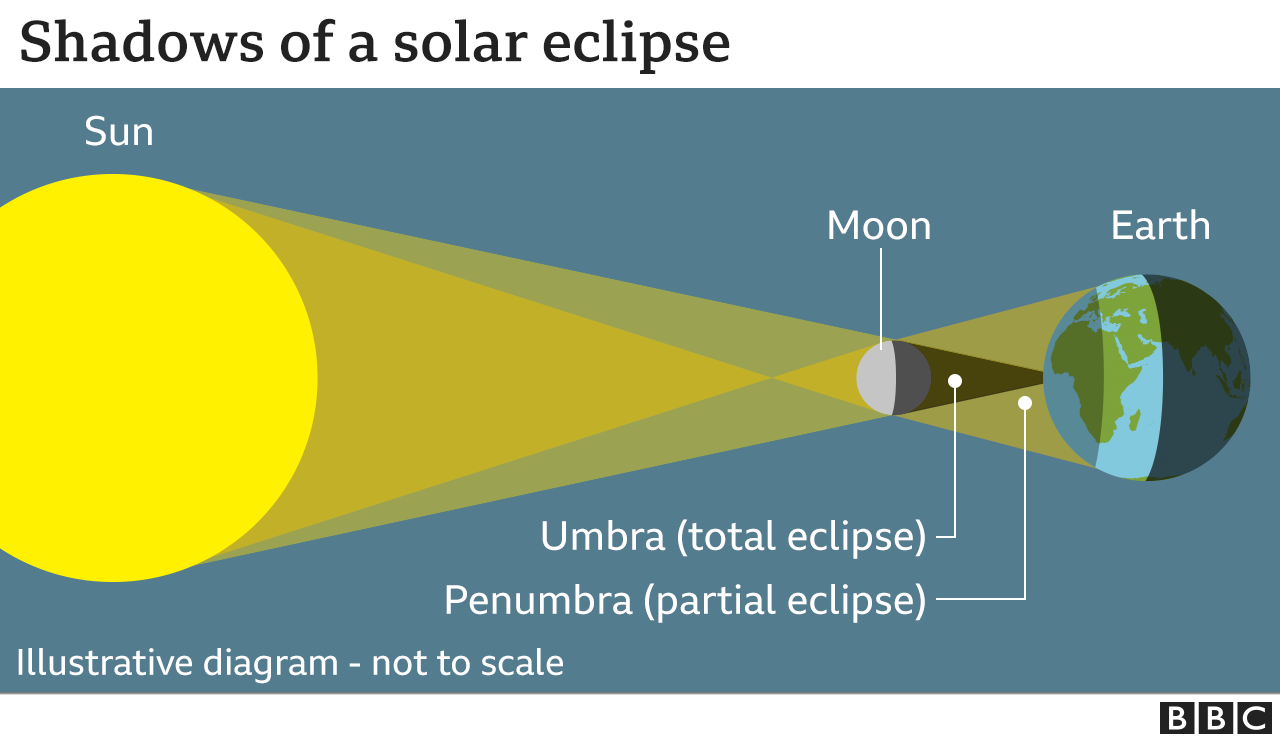The astronomical phenomenon will be less dramatic in the UK, but a partial eclipse could be visible in some parts of the country.
What is a solar eclipse and why is this one special?
A solar eclipse occurs when the Moon moves between the Earth and the Sun, blocking some or all of the Sun's rays from reaching the Earth.
The phenomenon is a cosmic event, requiring the Sun, the Moon and the Earth to be in just the right alignment for the Moon to cast a shadow on our planet.
When this happens, the Moon casts two types of shadows.
One results in a partial solar eclipse, which covers only part of the Sun.
The other - and the more spectacular - is called a total solar eclipse, in which the Sun's disc is entirely covered by the Moon, save for a delicate halo of scattered light coming from our star's outer atmosphere.
A total solar eclipse occurs somewhere on Earth roughly every 18 months or so. The continental US was also lucky enough to see one in 2017, but its next significant opportunity won't come until 2045.
What time is the solar eclipse in the UK, how long will it last and where can I see it?
It should be possible to catch a partial eclipse from western parts of the UK just before sunset - weather allowing.
Very simply, if you draw a line from about Fowey in Cornwall to Berwick upon Tweed in Northumberland, then everything west of that line might just get a view of the Moon biting the edge of the Sun as it disappears over the horizon.

|
|
||||||
Check Todays Deals on Ebay.co.uk Your Comments:
Custom Search

|
You are in:
UK /
Formby / North West
Find any Town in the UK, or Use UK map Local Google MAP for Formby Check Todays Deals On Amazon.co.uk Check Todays Deals on Ebay.co.uk 



 Be Seen - Advertise on Qlocal Corporate Sponsors
Southport Piano and Music Academy Washroom Services Maximum Grounds Maintenance Southport Garden Services Ormskirk Garden Services Sanitary Bins Nappy Bins & Waste Disposal Confidential Shredding Services Legionella Risk Testing London Washroom Services Croydon Washroom Services Hounslow Washroom Services Wandsworth Washroom Services Havering Washroom Services Sanitary Bins London Clinical Waste London General Waste London Legionella Testing London Shredding London Tatoo Waste London Preston Bird Control Blackpool Bird Control
UK, Local Online News Community, Forums, Chats, For Sale, Classified, Offers, Vouchers, Events, Motors Sale, Property For Sale Rent, Jobs, Hotels, Taxi, Restaurants, Pubs, Clubs, Pictures, Sports, Charities, Lost Found
formby,
formby News,
|
|||||






 Reply With Quote
Reply With Quote